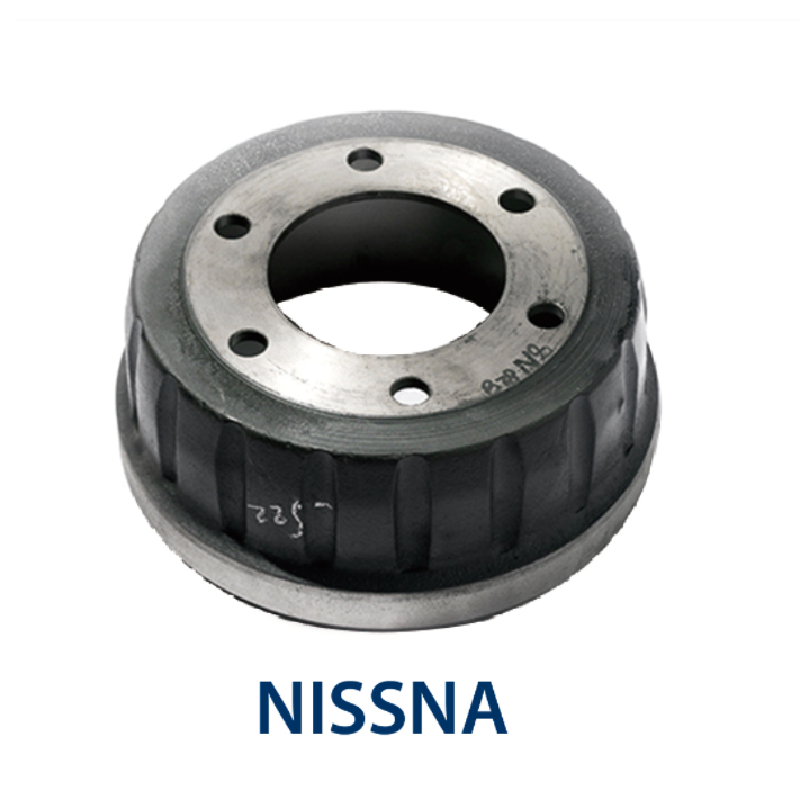ਦਸੰ. . 04, 2024 08:51 Back to list
Optimal Temperature Range for Brake Drums During Vehicle Operation and Performance
How Hot Should Brake Drums Get?
The brake system is one of the most critical safety components of any vehicle, ensuring a safe and reliable stop when needed. In particular, brake drums play a vital role in the braking process for vehicles equipped with drum brake systems. One of the important factors in assessing the performance and safety of these systems is understanding how hot brake drums should get during operation and what factors influence these temperatures.
Understanding Brake Drums
Brake drums are essentially cylindrical components made of cast iron or aluminum, designed to house the brake shoes. When the driver presses the brake pedal, the shoes are pushed outward against the inner surface of the drum, creating friction that slows the vehicle down. This friction generates heat, and understanding the temperature range that is acceptable is crucial for brake performance and longevity.
Temperature Ranges
Typically, the operating temperature of brake drums can range from 200 to 500 degrees Fahrenheit (93 to 260 degrees Celsius) under normal driving conditions. However, in high-performance or extreme braking situations, such as in racing or heavy-load applications, the temperatures can spike significantly, often exceeding 600 degrees Fahrenheit (316 degrees Celsius). At this elevated temperature, the brake system can begin to experience issues such as brake fade, which reduces its effectiveness.
Factors Affecting Brake Drum Temperature
There are several factors that can influence the temperature of brake drums
1. Driving Conditions Frequent stopping, such as in urban environments, can lead to higher operating temperatures. In contrast, highway driving, where brakes are applied less frequently, usually results in lower temperatures.
2. Weight of the Vehicle Heavier vehicles exert more force on the brakes, which can result in increased heat generation. Trucks and SUVs, for instance, will typically have higher brake temperatures than lighter cars.
3. Brake System Design The design of the brake system itself (e.g., the type of brake materials used, the surface area of the drum, and the size of the brake shoes) can affect how quickly heat is dispersed. Ventilated drums, which allow for better air circulation, tend to handle heat better than solid drums.
how hot should brake drums get

4. Brake Material The composition of the brake pads and shoes can also influence temperatures. High-quality materials designed for better thermal performance can resist heat buildup and maintain effectiveness longer than standard materials.
5. Ventilation Proper ventilation within the brake assembly allows hot air to escape, helping to keep operating temperatures within a safe range. This is particularly crucial in high-performance applications.
Consequences of Overheating
If brake drums exceed their optimal temperature range, several problems can arise
- Brake Fade As temperature rises, the brake fluid can vaporize, leading to a loss of braking performance known as fade. This can create a dangerously ineffective braking system.
- Warpage and Cracking Excessive heat can cause the brake drums to warp or crack. This warping can lead to uneven brake wear, vibrations during braking, and potentially complete brake failure.
- Deterioration of Brake Pads High temperatures can also accelerate the wear of brake pads. If pads are thermal-glazed (hardened due to extreme heat), they can lose their friction properties, further compromising braking performance.
Monitoring Brake Drum Temperature
To maintain safety, it's essential for vehicle owners to monitor brake performance, particularly in demanding driving situations. If you notice any changes in braking efficiency, such as grinding noises, vibrations, or a spongy brake pedal, it's crucial to have the brake system inspected. An experienced mechanic can measure the temperature of the drums during service and recommend necessary adjustments or replacements to ensure safe operation.
Conclusion
In summary, brake drums should ideally operate within a temperature range of 200 to 500 degrees Fahrenheit for optimal performance. Understanding the factors that contribute to heat buildup during braking, as well as the consequences of overheating, can help vehicle owners maintain their brake systems effectively. Monitoring performance and seeking professional help when issues arise can safeguard you from potential brake failures, ensuring a safer driving experience.
-
Brake Drum Man - High-Quality Drum Brake Drums & Brake Shoes for Reliable Performance
NewsJun.24,2025
-
High-Quality Brake Drum Kamaz – Durable Drum Brake Drum & Brake Shoe Replacement
NewsJun.10,2025
-
High-Quality Brake Drum Liza for Drum Brake Systems - Superior Durability and Performance
NewsJun.10,2025
-
High-Quality Brake Drum Kamaz – Durable Drum Brake Drum & Brake Shoe Solutions
NewsJun.10,2025
-
Durable Kamaz Brake Drums High-Performance Truck Parts
NewsJun.09,2025
-
Premium Brake Drum Maz Kit with Shoes Enhanced Braking
NewsJun.09,2025
